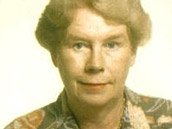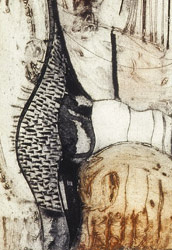Moving Giraffes
Kaye Thomson
The carpenters arrived early. They brought the wood and nails with them and started building two coffins on the front verandah of my house in Lilongwe. They checked the measurements of my two wooden giraffes and I produced some bubble plastic wrap for the animals’ heads to protect their ears and little horns. “We don’t often have to pack such long artifacts. Your largest one is six feet tall,” the head carpenter told me, “but, I can assure you, they will make it safely by airfreight to Canada in these boxes.” I still worried about them getting damaged.
I had bought the giraffes from an art shop in Malawi although they were made at Victoria Falls in Zambia from real tree branches; their heads delicately carved and bodies painted in the brown and yellow reticulated pattern that so perfectly camouflages the live animals when grazing among the acacia trees. Their long legs ended in flat pieces of wood (blackened with boot polish) in token resemblance to the dinner plate size of actual giraffe feet. This base enabled the carvings to stand upright without wobbling and contributed to their artistic, but life-like appearance. The tallest giraffe stood very straight and manly and I named him Harold. The other one was a foot shorter and her neck curved gracefully in a feminine shape. I called her Maud. I placed them both lying down full length in my station wagon with their heads beside my shoulder and drove us all home.
•••
I chose those names from the classic cult film “Harold & Maud” which featured music by Cat Stevens and one of my favourite songs, “You can do what you want.” The film had absolutely nothing to do with giraffes or Africa, but was essentially about being free to just be yourself. I imagined that my virtual pet giraffes wanted to be free, too. They had a long journey by air from Africa to Canada, but arrived safely in Ottawa, where I stood them together in the corner of my living room beside a very tall potted ficus tree so they appeared to be grazing on the leaves.
Five years later Harold and Maud took another air journey. They were individually wrapped in lots of bubble plastic and each packed into cardboard boxes made tall enough for them by joining two boxes on top of one another with masking tape. This time they only traveled as far as Victoria in British Columbia, where they remain to this day. I bought them a new ficus tree and planted it beside them in the same pot. They now look out the window at Government House across the road and perhaps occasionally catch a glimpse of the deer that live in that very large garden.
Moving a real giraffe was not so easy in 1825. A very young female giraffe, almost 6ft tall, was captured in the Sudan by men throwing a cloth over her head and tying a rope around her neck. They bound and tied her to a camel for the long walk to the city of Khartoum. From there she sailed down the river Nile in an open boat to the Egyptian city of Alexandria. She was destined for a much longer voyage to France as a gift from the Viceroy of Egypt to King Charles X. A ship was prepared for her by cutting a hole in the deck to allow her to fit into the ship’s hold. Branches of Neem tree leaves were sent on board to be fed to her by the Arab keeper assigned to accompany her all the way to Paris. She slept standing up and, despite the lack of space in which to move and the unfamiliar surroundings, she survived the journey well and continued to grow taller, reaching a height of nine feet on her arrival in France. This giraffe was named Zarafa, the Arab word for giraffe. She had no tear ducts with which to cry, but she could hiss, snort, moan, snore, make strange flute-like noises and close her nostrils. By the time the ship reached Marseilles winter had set in. It was decided to wait until spring before continuing the journey of 412 miles to Paris on foot in case the animal could not survive the cold weather.
The King sent a famous biologist who specialized in exotic animals, Etienne Geoffroy Saint-Hilaire, to care for the giraffe. A warm stall was built for her shelter and a long yellow coat with a black border embroidered in gold fleurs-de-lis, the King’s emblem, was put over her back. Special shoes were also designed to fit her large feet. They decided to feed Zarafa on milk, so a cow was bought to provide her with 40 pints of milk a day, which she lapped up with her extremely long, black tongue. Once spring arrived, the entourage – headed by the giraffe pulled on a leash by the Arab keeper, followed by the animal scientist and lastly the cow – commenced their long walk to Paris. The journey took them 41 days. The sight of such an unusual animal walking down the road – never seen before or even imagined by the French population – caused a sensation.
Zarafa was first exhibited in the Place Bellencourt where 30,000 Parisians viewed her. Poems were written about her, artists painted her and her image was transcribed onto pottery, textiles, ivory combs, wall paper, souvenirs and countless manufactured goods. Women dressed their hair as high as they could manage and even the men wore extra high hats a la giraffe. Zarafa was much loved by some 100,000 visitors to the Jardin des Plantes in Paris where she was kept until her death in 1845. An autopsy unveiled her huge heart, which weighed 25lbs. To preserve her body for future generations it was decided to have Zarafa mummified. She now stands alone at the Museum of Natural History in Rochelle at the top of a staircase where she remains, in the words of Eugene Delacroix, “as obscure as her entry into the world had been brilliant.”



